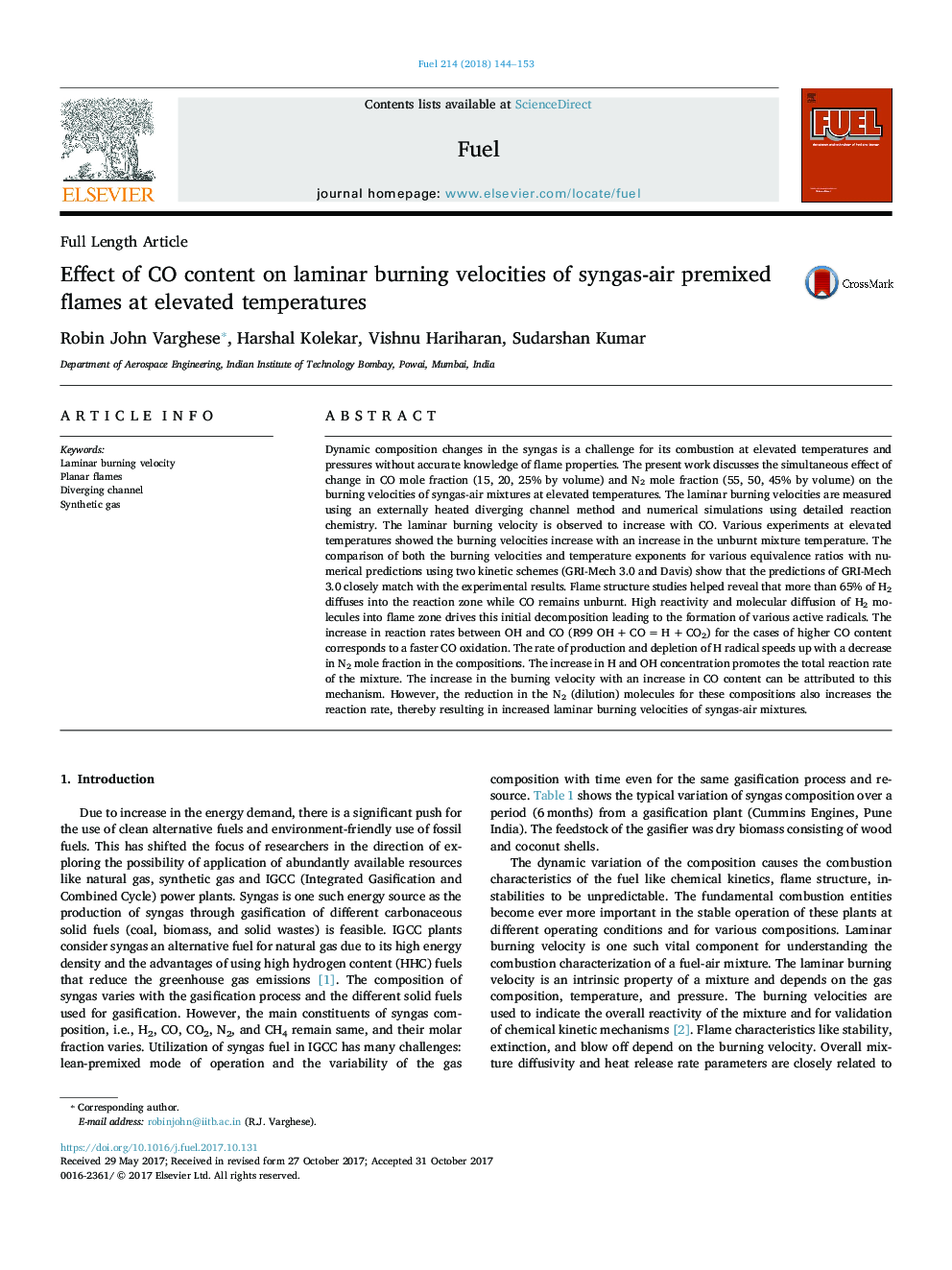| Article ID | Journal | Published Year | Pages | File Type |
|---|---|---|---|---|
| 6632359 | Fuel | 2018 | 10 Pages |
Abstract
Dynamic composition changes in the syngas is a challenge for its combustion at elevated temperatures and pressures without accurate knowledge of flame properties. The present work discusses the simultaneous effect of change in CO mole fraction (15, 20, 25% by volume) and N2 mole fraction (55, 50, 45% by volume) on the burning velocities of syngas-air mixtures at elevated temperatures. The laminar burning velocities are measured using an externally heated diverging channel method and numerical simulations using detailed reaction chemistry. The laminar burning velocity is observed to increase with CO. Various experiments at elevated temperatures showed the burning velocities increase with an increase in the unburnt mixture temperature. The comparison of both the burning velocities and temperature exponents for various equivalence ratios with numerical predictions using two kinetic schemes (GRI-Mech 3.0 and Davis) show that the predictions of GRI-Mech 3.0 closely match with the experimental results. Flame structure studies helped reveal that more than 65% of H2 diffuses into the reaction zone while CO remains unburnt. High reactivity and molecular diffusion of H2 molecules into flame zone drives this initial decomposition leading to the formation of various active radicals. The increase in reaction rates between OH and CO (R99 OHâ¯+â¯COâ¯=â¯Hâ¯+â¯CO2) for the cases of higher CO content corresponds to a faster CO oxidation. The rate of production and depletion of H radical speeds up with a decrease in N2 mole fraction in the compositions. The increase in H and OH concentration promotes the total reaction rate of the mixture. The increase in the burning velocity with an increase in CO content can be attributed to this mechanism. However, the reduction in the N2 (dilution) molecules for these compositions also increases the reaction rate, thereby resulting in increased laminar burning velocities of syngas-air mixtures.
Related Topics
Physical Sciences and Engineering
Chemical Engineering
Chemical Engineering (General)
Authors
Robin John Varghese, Harshal Kolekar, Vishnu Hariharan, Sudarshan Kumar,
